A Recipe Legacy // Generation to Generation
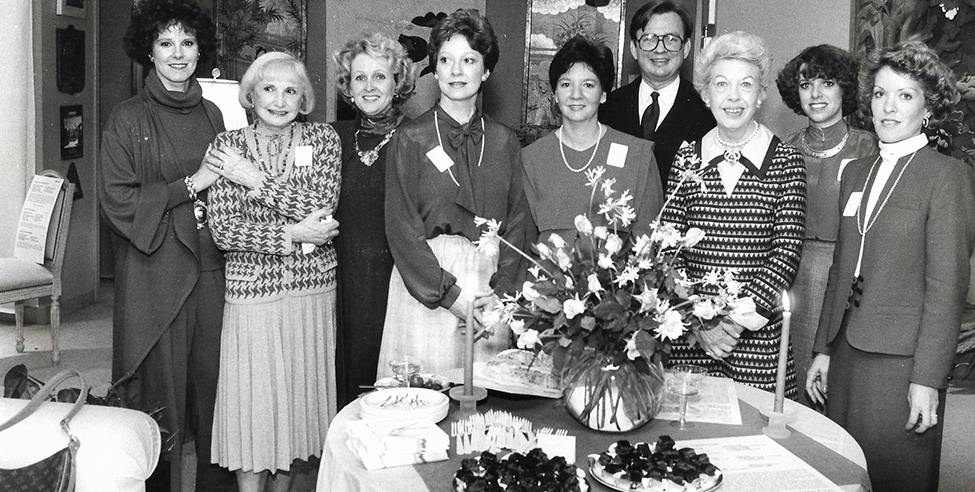
by Caroline Marcello, Special Features Editor The Thibodaux Service League started in March of 1974 with goals to educate women in the community and to take part in charitable acts. In 1982 a group of service league members decided to put together a collection of recipes to create a cookbook. They tested hundreds of recipes to create the Louisiana Legacy Cookbook. What started out as a local project for women in the league, turned into a trip of a lifetime to New York City for five service league members. In November of 1984 Jan Maki, Marie Falgoust, Gloria Lynch, Peggy Rouse, William Tate-Mitros, and Jeanne Chiasson boarded a plane with ten ten ice chest of food and headed to New York. This trip was a culmination of two years worth of promotional events for the cookbook. At this time the cookbook was being sold in forty states but this party introduced the book to highly regarded critics in New York. William Tate-Mitros, an employee for the New York Times Company, offered to give a party featuring the Legacy Cookbook and the Thibodaux Service League members. The reception was held at the New York Times headquarters and featured authentic cajun cuisine. Some of the recipes included marinated crab claws, crawfish benny, and boursin. “We were quite the site,” said Jeanne Chiasson as she looked through photos and newspaper articles from the trip. “It was an amazing trip and all the ladies had the best time.” Now thirty-three years later, Jeanne’s daughter Stephanie Chiasson Toups is working with a whole new generation of service league members to create a new edition of the Legacy Cookbook titled Louisiana Legacy Today. “Throughout the years we have thought about creating a new cookbook, but we knew there was no way we could do better than the original Legacy,” said Stephanie. The women active in today’s league have decided to create a totally different kind of publication. They are working on creating a picture cookbook perfect for any southern women’s coffee table. “We hope to have a picture of every recipe as well as pictures of Thibodaux landmarks and our beautiful bayous. We hope to really highlight our culture,” said Stephanie. Craig Perk from Vacherie, Louisiana is set to take the photos that will be featured in the book. The book will be divided into four the seasons with seasonal recipes organized accordingly. For example, the fall will feature popular tailgate items for Nicholls football games while the spring section will include crawfish recipes perfect for lent. They are now collecting and testing recipes to see which selections will make it into the book. With the first photo shoot scheduled for June, Stephanie and the service league members are busying trying recipes from the original legacy as well as new recipes from local chefs. “My favorite recipe so far has been our new take on crawfish benny. Instead of using ingredients like pimentos we used red bell peppers and instead of can mushrooms, we used fresh mushrooms. We put a healthier spin on the original recipe and it’s delicious,” said Stephanie. These cookbooks have given women of the bayou region the opportunity to share traditions and our unique culture with generations. They have showcased the hard work and dedication of the Thibodaux Service League and all of their members. The hope is that Louisiana Legacy Today will be out by December of 2018. They will be available to buy on the league’s website and will make the prefect Christmas gift from any fan of the original cook book and any up and coming cajun cook.
Cajun Culture // Everyday Life

by Caroline Marcello, Special Features Editor There are many aspects that come together to create a truly unique culture in Southern Louisiana. Locals place a twist on just about everything, and women in particular love adding cajun flavor to everything they do. Their art, apparel, and stories shouldn’t be taken at face value because everything carries a deeper meaning than what meets the eye. Everything women touch in Louisiana has love, soul, and, of course, a cajun twist. Art An artist’s inspiration can come from practically anywhere, especially in South Louisiana. The southern state is rich with culture just waiting to be captured–in paintings, photos, and words. Artists don’t need to travel far to find inspiration. In fact, most of the landscape found in art is probably the artist’s backyard! Throughout the year many art shows and festivals are held to showcase work. Annelise Delahoussaye is a local artist here in Thibodaux. She has had the unique experience of creating art with Tony Bernard. Even though Bernard isn’t a household name yet, he was the apprentice to George Rodrigue who is known word wide for his Blue Dog paintings. “It such a cool experience getting to work with Mr. Bernard. He is a huge up and coming artist in our area and he learned from the best,” said Delahoussaye. “I don’t think he thought about gender when he asked me to work with him but it was an empowering experience for me because he could have picked any of the other guys at the art show, but he picked me. He recognized my talent and it always feels good to get recognition for the work you put your heart and soul into.” Annelise works on her art every chance she gets. Here she explains how she started painting and how her art has evolved into what it is today. Apparel Women in the South take pride in their appearance, and even more so in their children’s appearance. Andree’s Baby Boutique in Thibodaux caters to these women and their stylish children. They first started as an antique store but after twins were born into the family the Richard’s decide to take their local business in a new direction and started selling baby clothes. Andree Richard, the store owner of the boutique, says that there is something special about southern mothers. They take pride in their culture and they share their love for their area with their children. “We sell a lot of cajun themed clothes. Our smocks have crawfish, alligators, snowballs, and things that only people in the south understand,” said Richard. “When we go to the market every year these vendors only sell to Louisiana stores. It’s a thing down here that people in other states just don’t get,” said Richard. These special pieces that represent so much of our culture also can be handed down from family member to family member. “These are high-quality pieces so they last forever.” Mothers are able to get so much use out of Andree’s clothes, they are timeless pieces that their children can wear at any age and represent their favorite Louisiana tradition. Stories Everyone has heard of the childhood stories Little Red Riding Hood, The Tree Little Pigs, and The Night Before Christmas. Louisiana mothers read their children Petite Rouge, Les Trois Cochons: The Cajun 3 Little Pigs, and The Cajun Night Before Christmas. Cajun culture has even made its way into traditional folk tale stories. The Cajun Night Before Christmas, written by “Trosclair” in 1992 has been a long time family favorite in many homes. The author took the traditional story and added cajun phrases like “Cuz dere on de by-you” (translated to cause here on the bayou) and “Den down de chimney” (translated to then down the chimney) to add a definite cajun flair. Local authors have found a way to add a local influence into classic childhood stories to give children a greater appreciation for our cajun culture. Being from Galliano Louisiana, Andie Chiasson-Kearney has the cajun accent down pat and it gives the story a live animation of how it was meant to be read. “We have The Cajun Night Before Christmas at my house and I read it to my son Lincoln every year,” said Kearney. These books give locals another opportunity to add southern culture in their children’s lives. Art Apparel Previous Next excerpt fromThe Cajun Night Before Christmas
Timeless Traditions and Treasures // Jewelry
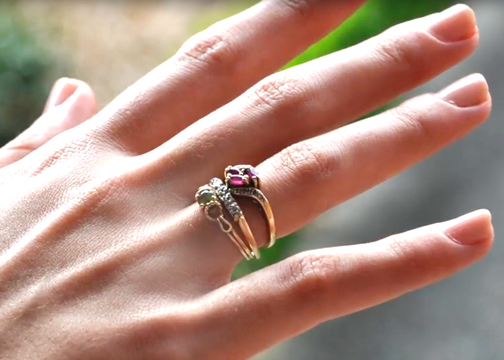
by Caroline Marcello, Special Features Editor Tradition runs deep in almost every aspect of southern living. Generations learn from previous generations. Things like recipes, stories, and family heirlooms are passed down to keep traditions alive. Even though these things don’t cost a lot, the sentimentality behind them make them priceless. One common item passed down from earlier generations is jewelry. Briana Berthelot, the 22-year-old daughter of Vickie Berthelot, wears three rings every single day. Each ring is passed down from a different generation, one from her great-grandmother, one from her grandmother, and one from her mother. Even though each ring is from a different decade, the styles are cohesive but distinctly different. Jeanne Gianelloni wears a ring that has been passed down four generations. The ring was given to her by her aunt, who had two boys. “It is a beautiful ring and I always admired it when my aunt wore it. I never thought that she would give it to me, but when she did I cried,” said Gianelloni. Even with it being over 100 years old, the ring is still in great condition. Sydney Rutter also has many pieces of jewelry from her mother. Sydney said, “The pieces I have are necessarily very old but they all hold meaning to me and my mom. One she bought while traveling abroad during college, and another was given to her by my father.” No matter if the ring is 100 years old or 10 years old the story behind them can be just as significant. Women in South Louisiana hold tradition and family close to their hearts. If you ask most women they prefer something old rather than something new. These pieces of jewelry hold stories that can be passed down from generation to generation, and they are timeless and classic.
Orangecello // Louisiana Mandarin Style
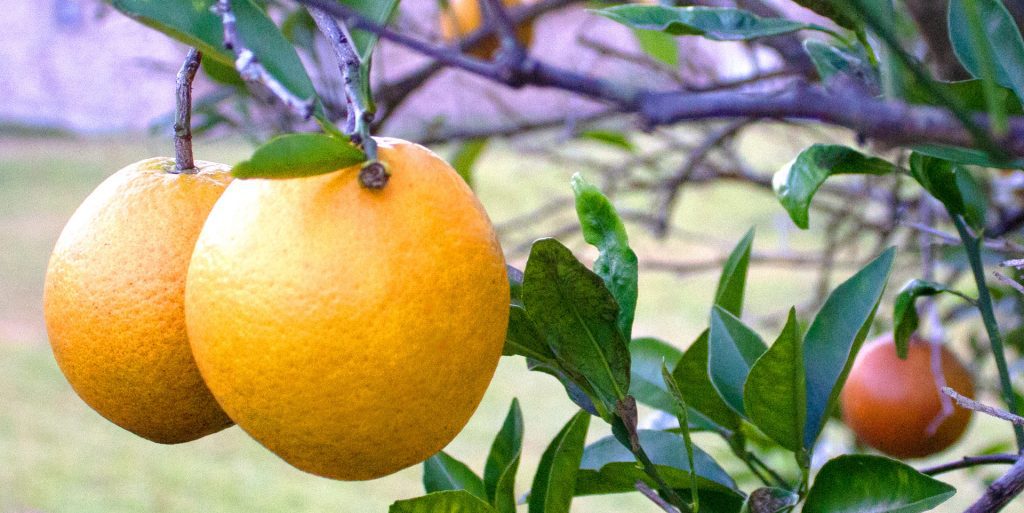
Mandarin Orangecello Prep Time10 min Cook Time5 min Total Time15 min Ready in7-10 days Yield1 bottle INGREDIENTS 12 mandarin oranges 750 ml Everclear (a fifth/one bottle) 2 cups sugar Instructions 1 Wash and dry the mandarin oranges. Remove the rinds and place them in a pitcher. Pour the Everclear into the pitcher with the rinds and let them soak for 7-10 days before bottling. Before bottling, make a simple syrup by mixing 2 cups of sugar with 3 ¾ cups of hot water. Pour the simple syrup into a separate pitcher and let it sit in the refrigerator until cool. Strain the rind/Everclear mixture and mix it with the simple syrup once it has cooled. Bottle and enjoy!
Festival // Faves and Fails

by Melanie Cowan, Special Sections Editor WHILE ADVENTURING ACROSS SOUTH LOUISIANA AND COVERING THESE FESTIVALS, we have come across some amazing and not so amazing events that the staff would like to share. These are a compilation of our personal experiences at each festival and are our opinions alone. We rated these festivals on a 0-5 scale with five being the best and zero being the worst for four individual categories: vendors, food, crowds and music. Those scores were then added up for a total overall experience score out of 20 possible points. For each festival scoring a 10 or lower, they were given a “FAIL” label, if the festival scored a total of 11-20, they were given a “FAVE” label. Thibodauxville Thibodaux, LAIn the heartland of “Bayou Country” there lies the city of Thibodaux. The city is small perhaps, but nothing short of cultural and rooted in history. In the center of Thibodaux is downtown, the hub of sorts for larger events. This is where Thibodauxville really shines. The festival kicks off with the Big Boy’s Cook-off where locals can put their best and cherished recipes to the test. Visitors can pay just $5 for all you can enjoy tastes of the contestants’ dishes. They are judged and a winner is chosen at the end of the night. The following day is where the real fun begins. Multiple local bands perform throughout the day and food vendors line the closed-off streets to showcase their southern dishes as well as local businesses who sell their crafts under the shade of a tent for visitors to buy something truly special that they cannot get anywhere else. This year’s Thibodauxville festival had a record breaking weekend with their visitors nearly doubling from 2015. Although the crowds were rather large, the lines leading to food vendors were not as long as was expected. The lines were eliminated pretty quickly and it ran very efficient and smooth. The duck races topped the charts with over 500 entries separated by age group. Over 500 rubber ducks floated along the bayou which was truly a site to see. I will surely be returning to this festival next year, where they plan to make this event an all weekend long affair due to the large turn out this year. Thibodauxville truly captured the culture of the bayou region as well as brought visitors and locals together to celebrate everything and anything at all, just like we Louisianaians are known to do. Voice of the Wetlands Festival Houma, LAThis festival is often easily overlooked, but the Voice of the Wetlands festival is a fun and exciting event that brings to light a really big issue directly effecting south Louisiana. That issue is the disappearing of the state’s wetland ecosystems due to coastal erosion. The festival’s purpose is to educate residents on how they themselves can take small steps to saving Louisiana’s wetlands. It also helps that all of the festival’s proceeds go to the Voice of the Wetlands organization—a non-profit dedicated to the education and fund-raising to benefit the preservation of the wetlands. Although it was a great weekend festival, full of great cultural influence and impressive eats, some visitors criticized the location of the festival and how dark the area was once the sun set. There were not that many street lights or extra lighting whatsoever causing the crowds to get sparse as the night went on. However, the “vowenteers” were very upbeat and made the entire festival run amazingly smooth. From running the silent auction to serving food to directing parking, they were an essential part of why this festival is able to keep running year after year. The highlight of the VOW festival was truly the music acts. They booked over five acts per day which really kept everyone on their feet dancing. This festival is bursting with culture and purpose and, although it’s new location was less than perfect, it truly was an enjoyable experience for all ages and this festival is a true testament to the phrase “it takes a village…” because when a community comes together for a worthy cause, they can accomplish amazing things. Fried Chicken Festival New Orleans, LA The first annual Fried Chicken Festival held in the center of New Orleans, was one of the many events that emerged this year held in Lafayette Square. The parking was not as expensive as the French Quarter which was a personal victory for me personally. Spending over $30 to park in New Orleans on any given day makes my heart fall to my feet. On this particular day, however, I only paid $5 to park all afternoon and a short 5-minute walk to Lafayette Square. The music that was playing at this festival was very animated and got everyone on their feet. The music was heavily jazz influenced which is to be expected in this city and fit this festival to a T. There were over 50 vendors all with different methods and dishes with one common denominator—fried chicken, a holy grail in the south region of the United States. White meat, dark meat, tenders, sandwiches, tacos, you name it were at this popular event. The crowds were tremendous. I visited later in the day hoping the crowds would die down but that was extremely far from the truth. The lines to get fried chicken were so long that I did not even get to eat fried chicken at this festival. Not to mention, that booths that had no line were because they ran out of chicken, which was the case for many vendors. To go along with that, the beverage tent was a one-stop-shop of sorts and was the only place to get any kind of beverage on a hot Louisiana day. Alcoholic and soft drinks as well as water were served under the same tent, in the same line. This caused a long line to wait for a beverage as well. However, once you get up there, the
Festival Royalty // A Louisiana Must

by Melanie Cowan, Special Sections Editor There is a little something special in common with all the festivals in Louisiana which has become a subculture within itself. FESTIVAL PAGEANTRY is truly something to behold because it puts a face to the festival itself. The contestants all have ties to the festival or the region in some way to make them want to compete to represent the place that they hold so dear. The competition is fierce, but at the end of it all, one woman stands tall among the rest. In Louisiana alone, 93 of the 123 fairs and festivals under the Louisiana Association of Fairs and Festivals have queens. Although taking the crown seems like a glamorous job, it comes with a lot of responsibility. It is very common for festival queens to travel around the state all year to promote their festival. That means attending other local festivals and and learn about the region. Although most queens are from the area they represent, it is not necessary. This is the case for Caroline Marcello, a senior at Nicholls State University from Thibodaux and this year’s Sugar Cane Festival Queen 75. This may seem confusing to some, being that Marcello is from Thibodaux but she represents New Iberia at their Sugar Cane Festival but she says it is not about the city itself, but the sugar cane farmers she represents. “In July of this year after an interview process I was asked to serve as Miss Lafourche and represent the sugar cane farmers of the parish at the 75th annual Louisiana Sugar Cane Festival held in New Iberia every September,” Marcello said, “I was completely thrilled when I found out I was going to be representing our great parish and our hard working farmers as well as carrying on a special tradition in my family.” According to Marcello, it was especially important for her to take home the crown because her grandmother served as Queen Sugar 5 many years ago. She wanted to carry on the tradition because pageantry runs in her blood. As Queen Sugar, Marcello has a duty to travel to other festivals and experience what that specific city has to offer. “As a festival queen I get the opportunity to travel across the state of Louisiana and experience the variety of festivals. In my short time of being queen I have already learned so much about the diversity of our state. I’ve tasted gumbo in Bridge city for the Gumbo Festival, pet a cow in Abbeville at the Cattle Festival, and learned how to build a bonfire on the levee in Gramercy at the Festival of the Bonfires. It’s pretty safe to say I wouldn’t have experienced any of these things if I wouldn’t be a festival queen,” Marcello said. The pageant process is a stressful one, some girls have to go through the process year after year to finally get the title. This is the case for Bridge City native, Lyndsey Davis, who currently reigns as Queen Gumbo. Davis went competed in the Miss Gumbo pageant four times before finally winning the title this past September. “I don’t really do pageants, this was the only title I really wanted to compete for because the Gumbo Festival holds such a special place in my heart,” Davis said. Davis’ grandmother founded the Gumbo Festival in 1973 so the festival is a family affair for her. Her grandfather, aunts, uncles, and cousins have all won the crown and this year it is her turn. According to Davis, her reign thus far has been one to remember. “I get to meet so many girls all throughout the state of Louisiana. The duties a queen must uphold is to simply promote her festival with a positive attitude.” Davis says she will most likely not compete for another pageant in the near future because for her, it just would not be the same. “I love what I love and I just stick to it,” Davis said. Although the year is a year full of traveling and memories, it has to come to an end. Each year a festival crowns a new queen, and the queen from the previous year crowns a new successor who will follow in her footsteps. This is what Sydney Poche had to do this year at the Festival of the Bonfires. Her reign ended in November 2016, where she had to crown the new queen. According to Poche, it is just as exciting as her year as queen. “I’m connected to the festival because my parents are on the festival committee. I’ve been building bonfires with my family since I was a baby,” Poche said. She said her reign was a dream come true, but it was time to pass the torch for the next girl. “I’m always going to be there to give advice my successor needs and I will always be Miss Festival of the Bonfires to be there when the festival needs me.” No matter the festival, one thing remains the same, nothing beats the passion and dedication these queens bring to their festivals. Their legacy will live on like the queens before them and will forever be apart of festival culture and history.
First // You Make a Roux…

by Melanie Cowan, Special Sections Editor The start to any good gumbo or bisque is a ROUX— it is sac religious to think otherwise in South Louisiana. A roux is the foundation used to thicken stocks and is most commonly used to make gumbo. Most rouxs start by continuously stirring flour and a type of fat (either butter or oil) to get a desired color. It is, in fact, a labor of love that shines through Cajun dishes and has been an art form of sorts for decades. There are a few ways to make a good roux and most Cajuns will claim their method is better than the next. THE FIRST METHOD is an oil-less way of making a roux in the oven. All that is needed is two cups of all purpose flour. Start by preheating the oven to 350 degrees fahrenheit, then spread the flour evenly along the bottom of a cast iron skillet. Bake, stirring the mixture occasionally for about an hour until the desired color is reached. When the color is reached, let cool on a cookie sheet until needed. ANOTHER TRADITIONAL METHOD of making a roux is the Brown Roux method of mixing ½ cup of flour to ½ cup of butter together in a sauté pan. First melt the butter over medium-high heat. Slowly add flour stirring constantly until flour becomes light brown. The key here is stirring constantly because flour can become easily scorched and the roux will be unusable. If black specks show up in the roux, it is scorched and cannot be used. THE LAST COMMONLY USED METHOD of making a roux is the Oil Base Roux. This recipe calls for 1 cup of vegetable oil to 1 cup of flour. It is prepared the same way as a Brown roux, however, it will taste different. The color of a roux varies greatly as well and it is dependent on what the roux will be used for. A Blonde Butter Roux is cooked to a golden color, a White Butter Roux is cooked to a barley beige color, a Light Brown Cajun Roux which is light brown in color, and a Dark Brown Cajun Roux. A dark brown roux is usually used for gumbo. No matter the color, they are all helpful in the thickening of any Cajun dish that uses stock. Take a look at the video above to learn more on how to make a proper Cajun roux. https://youtu.be/65eKEIAdd1E
Chu-Chut // A Little Something
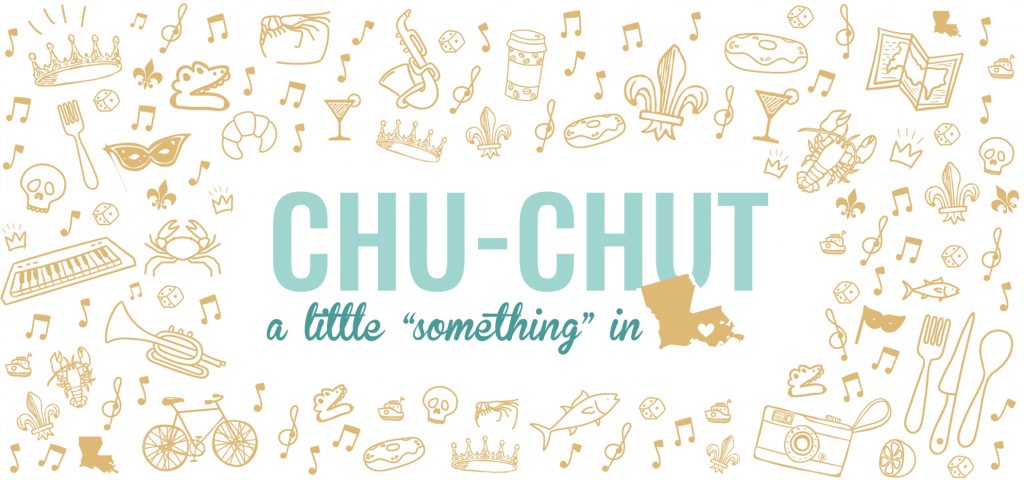
Welcome to Chu-Chut! by Katie Fletcher Chu-chut is a Cajun word meaning – thing. It usually refers to something small. It replaces a word that you can’t think of when you need to use it. As Cajuns we speak extremely fast, so instead of waiting for the word to come we quickly replace it with chu-chut. In South Louisiana the word chu-chut can be used by anybody in any situation. In the kitchen it can be used to refer to a measuring spoon, chip clip, or even a crumb on a countertop. In the car a chu-chut can be anything from a key chain to a loose hair tie. In a conversation between friends the word may be used to replace the clasp of a necklace or a zipper. At Garde Voir Ci we use Chu-Chut as a section for little things we want to share.
Pronounce Dat // A Cajun Food Dictionary

by Katie Fletcher, Special Sections Editor THE SOUTH doesn’t get much deeper than the bayous of Louisiana. Along these bayous French meets English to create a language unlike any other. The accents of the people around here are distinct and people talk with their hands as much as their mouths. Things are not always what they seem and this is especially true when looking at the way words are spelled. The food here is one of a kind and so are the names associated with it. We asked Rhonda Zeringue, a native of Schriever, Louisiana to pronounce some common Cajun and Creole dishes the way they are supposed to sound. She has grown up in South Louisiana and cooks most of these dishes in her own home. Here are some of the many delicious South Louisiana foods with the way to pronounce dat! https://youtu.be/WD8nAVGDe70
Gumbo // Practice Makes Perfect
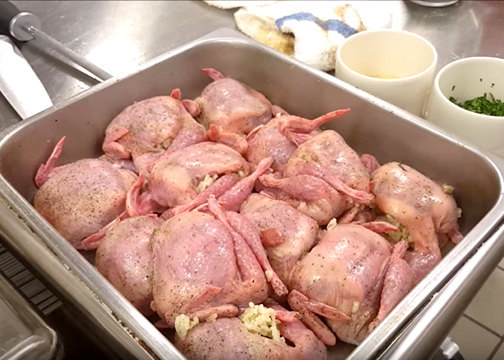
by Emily Clausen, Guest Contributor
